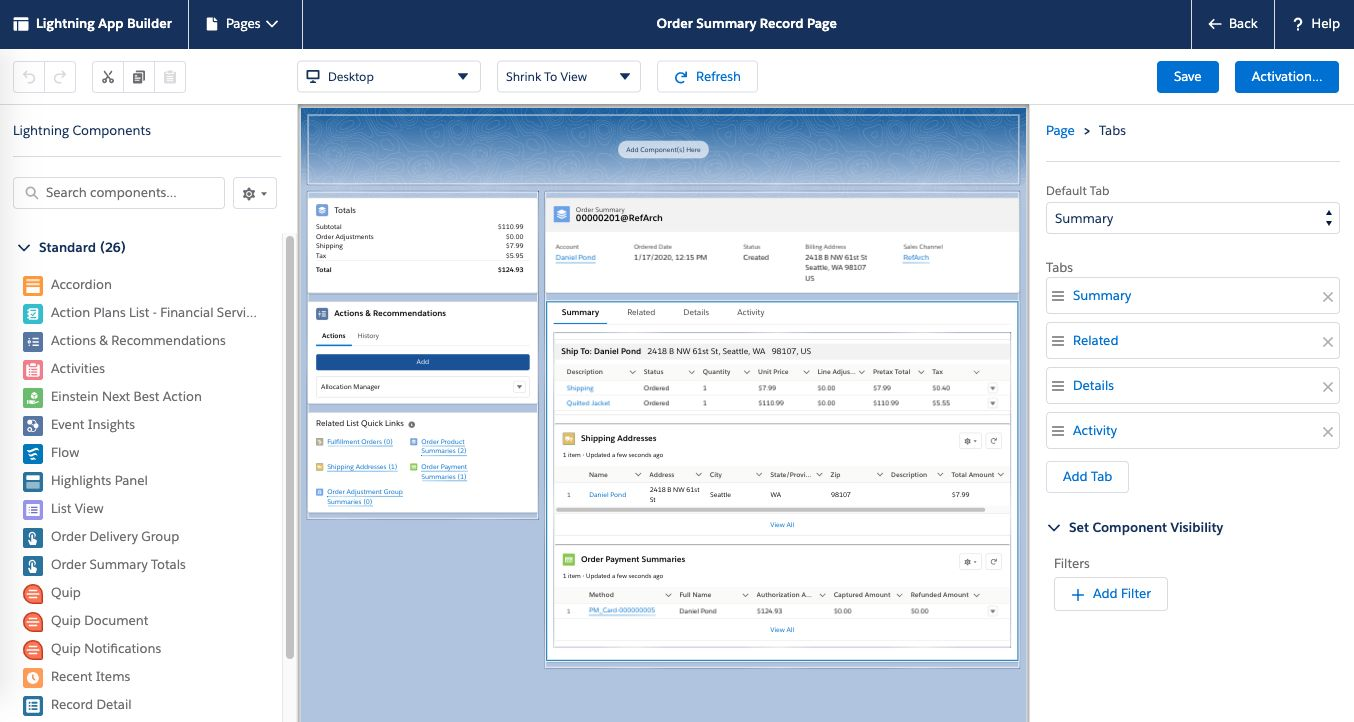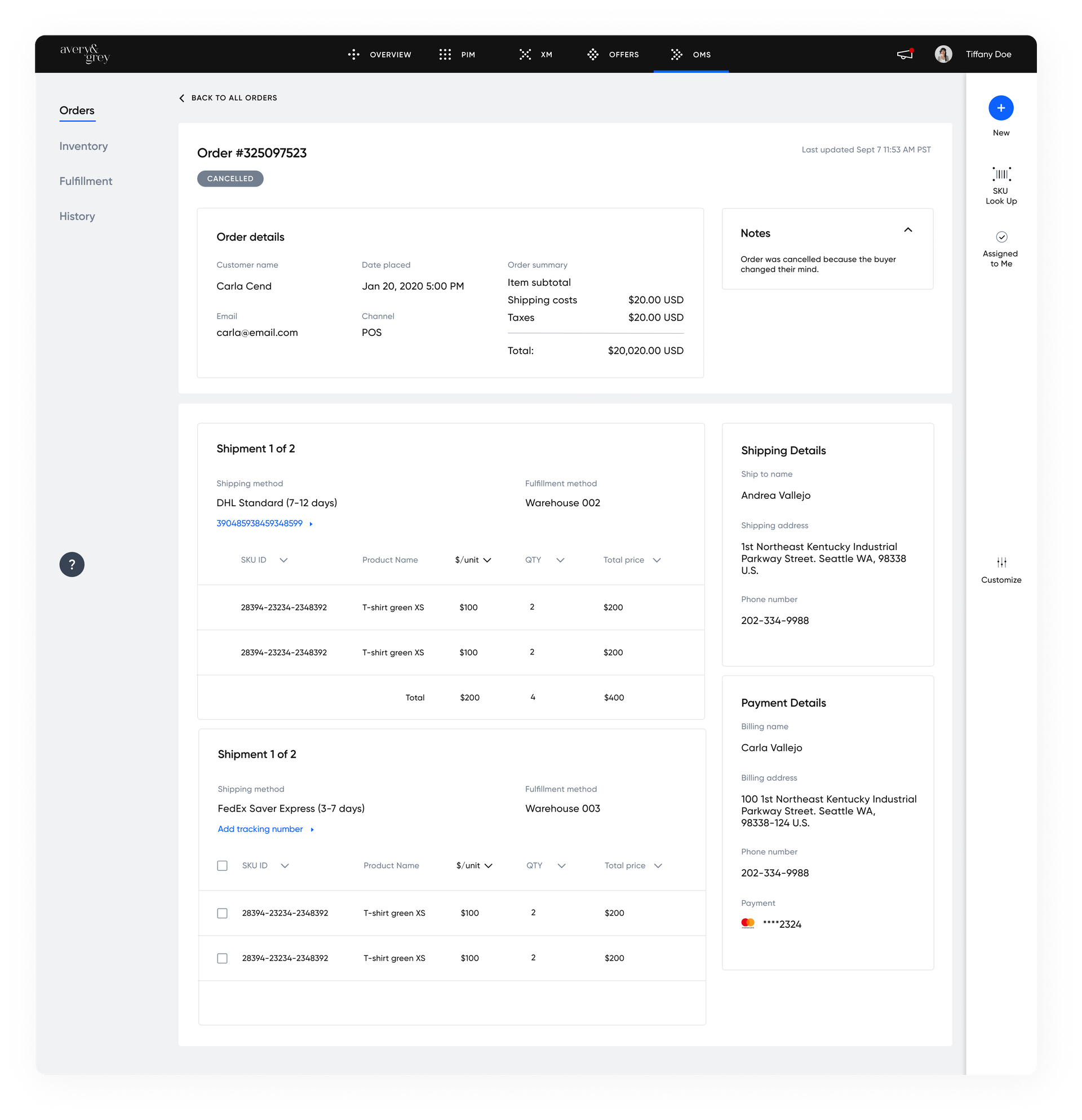What Is Salesforce OMS and Its Commerce Cloud OMS Alternatives?

Salesforce order management system (OMS) is a new cloud-based OMS that replaced Commerce Cloud OMS from Demandware. Acquired by Salesforce in 2017, Commerce Cloud OMS uses SQL and Microsoft.Net server technology, whereas Salesforce OMS is built on Salesforce CRM directly, allowing for more centralized data management.
With its experience in cloud software development, Salesforce OMS has an architecture that supports multiple e-commerce integrations. However, certain shortcomings necessitate the adoption of modern headless commerce OMS solutions as viable Salesforce order management alternatives.
In this article, we’ll cover the pros and cons of Salesforce OMS. We’ll also discuss some cloud commerce oms to help make an informed decision.
[toc-embed headline=”Salesforce OMS Features”]
Salesforce OMS Features
Advantages of Salesforce OMS
Since it is built directly on the CRM, Salesforce OMS supports extensive functions that let users centralize their customer data in one place. Businesses that already use Salesforce CRM can deploy the order management system independently or with other cross-cloud architecture solutions.
Salesforce OMS gives high omnichannel performance. Its third-party ecosystem provides businesses the apps they need to build and manage visual end-to-end order workflows, create invoices, capture payments, and fulfill orders. Salesforce OMS also integrates with UPS, Adyen, Avalara, and DHL.

Disadvantages of Salesforce OMS
Despite being an order management system for certain e-commerce companies, Salesforce OMS has several shortcomings. Its numerous features significantly slow down the OMS load-time, resulting in a clunky performance and user experience. Users also have to input and update data manually.
Because of its multiple integrations and features, Salesforce OMS depends on the implementation partners for upgrades and fixes rather than making required changes independently. Unlike modern microservices commerce solutions, Salesforce OMS has limited deployment and cloud options, inhibiting how much customers can do with the order management system.
Salesforce OMS is built with Apex, a complex programming language software, making it difficult for non-technical users to navigate the platform. These drawbacks leave many users with a difficult decision when it’s time to reconcile Salesforce’s high prices with its limited services.
[toc-embed headline=”Alternatives to Salesforce OMS”]
Alternatives to Salesforce OMS
Salesforce order management is not the only OMS available to e-commerce companies. Several traditional and modern alternatives are available. Understanding how these solutions work is key to making an informed decision.
Traditional Alternatives to Salesforce OMS
- IBM Sterling Order Management is one of the oldest OMS solutions for e-commerce businesses. Its best features include the easy-to-use interface and cross-channel functionality. These features let customers coordinate multiple orders from separate channels and reduce operational costs.
- Multiorders provides seamless cross-channel inventory management. It integrates with major sales channels like Woocommerce, Shopify, and Amazon, making it easier for e-commerce companies to simplify workflows and manage orders from one place. However, its lack of a microservices-based commerce architecture limits its services and features.
- Netsuite’s feature set makes it a popular OMS for businesses. Nevertheless, its traditional architecture leaves a huge gap that customers look to fill with more modern headless and microservices-based commerce solutions. Netsuite is built as a general enterprise resource planning platform, and its design is much less modern than that of the more modern OMS solutions.
Modern Alternatives to Salesforce OMS
- SAP Commerce Cloud replaces SAP Hybris Commerce as a modern headless commerce solution for B2B and B2C businesses. It is built on the open source Kubernetes technology, which provides more flexibility than the traditional proprietary infrastructure.
- Shopify is one of the most common order management systems for B2B and B2C businesses. Its primary advantage is the Shopify Fulfillment Network integration. However, the lack of support for microservices-based commerce imposes limitations. Shopify Fulfillment Network can only accommodate merchants with less than 200 SKUs per day.
- fabric OMS is built on a microservices-based commerce architecture that guarantees flexibility, high performance, and security. Its highly-interactive interface lets users streamline order management from a single platform.
[toc-embed headline=”Key Takeaways”]
 Key Takeaways
Key Takeaways
- While Salesforce OMS has several features, its speed and security are still a primary concern for customers.
- Businesses seek microservices-based commerce alternatives to Salesforce OMS because of its clunky user experience and slow performance.
- Most traditional and modern alternatives to Salesforce OMS and Commerce Cloud OMS still lack the flexibility and security users need.
- fabric OMS utilizes a headless commerce architecture that provides the security and flexibility e-commerce businesses need for order management.

Tech advocate and writer @ fabric.
 Key Takeaways
Key Takeaways